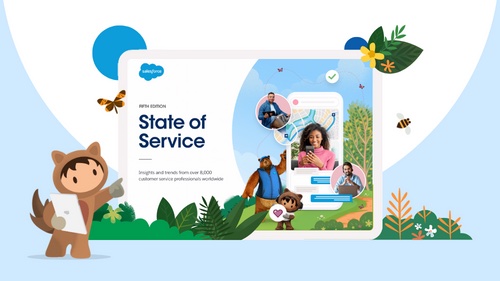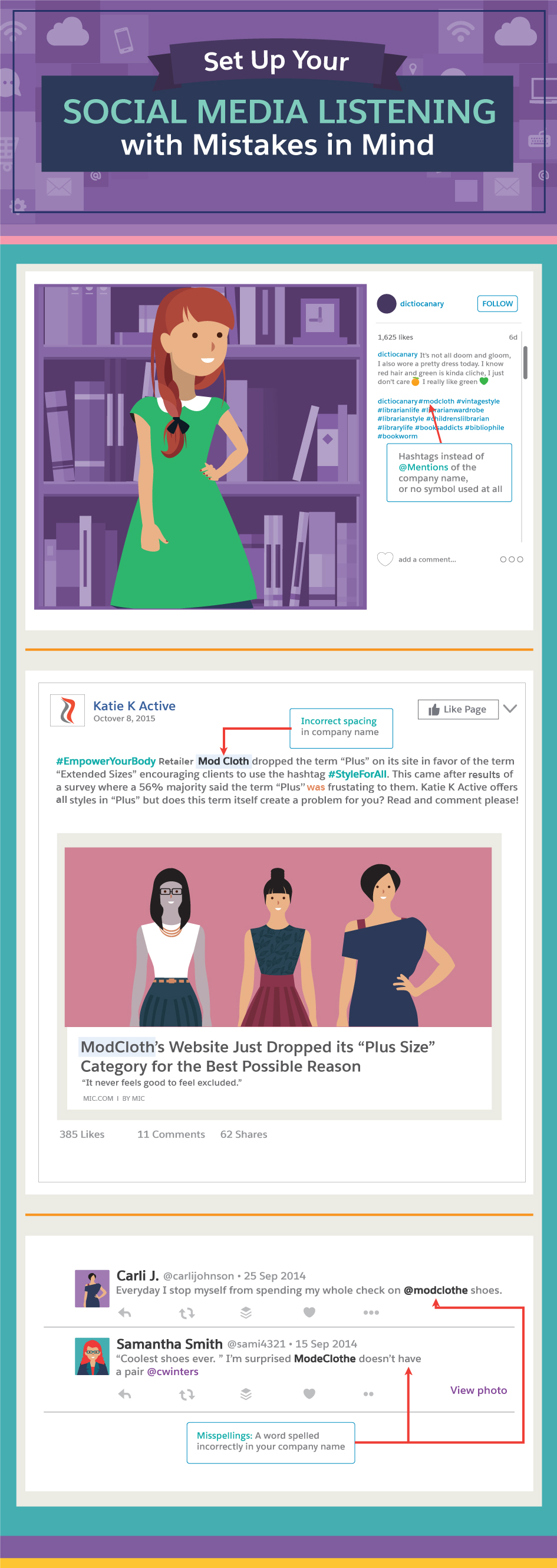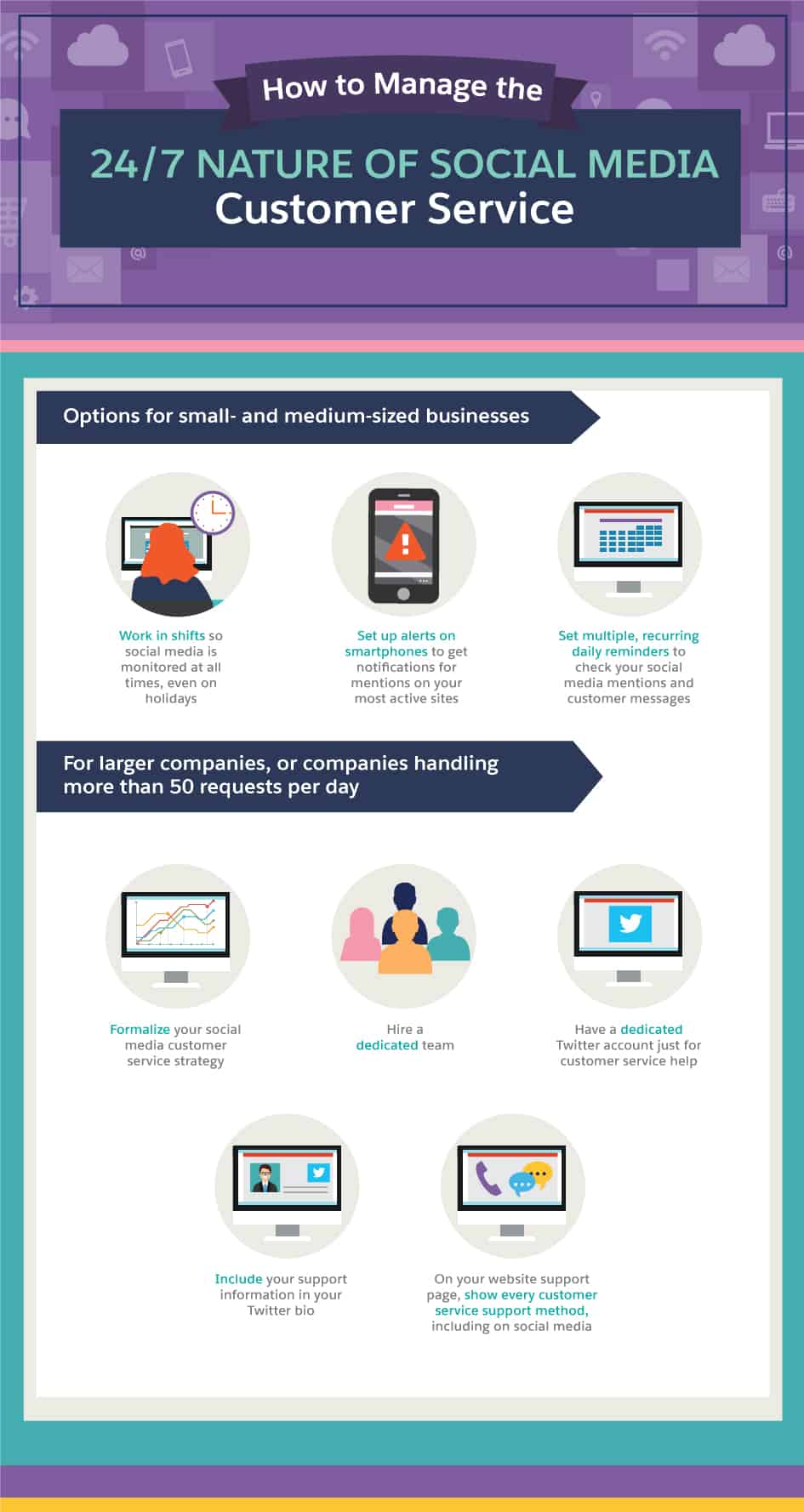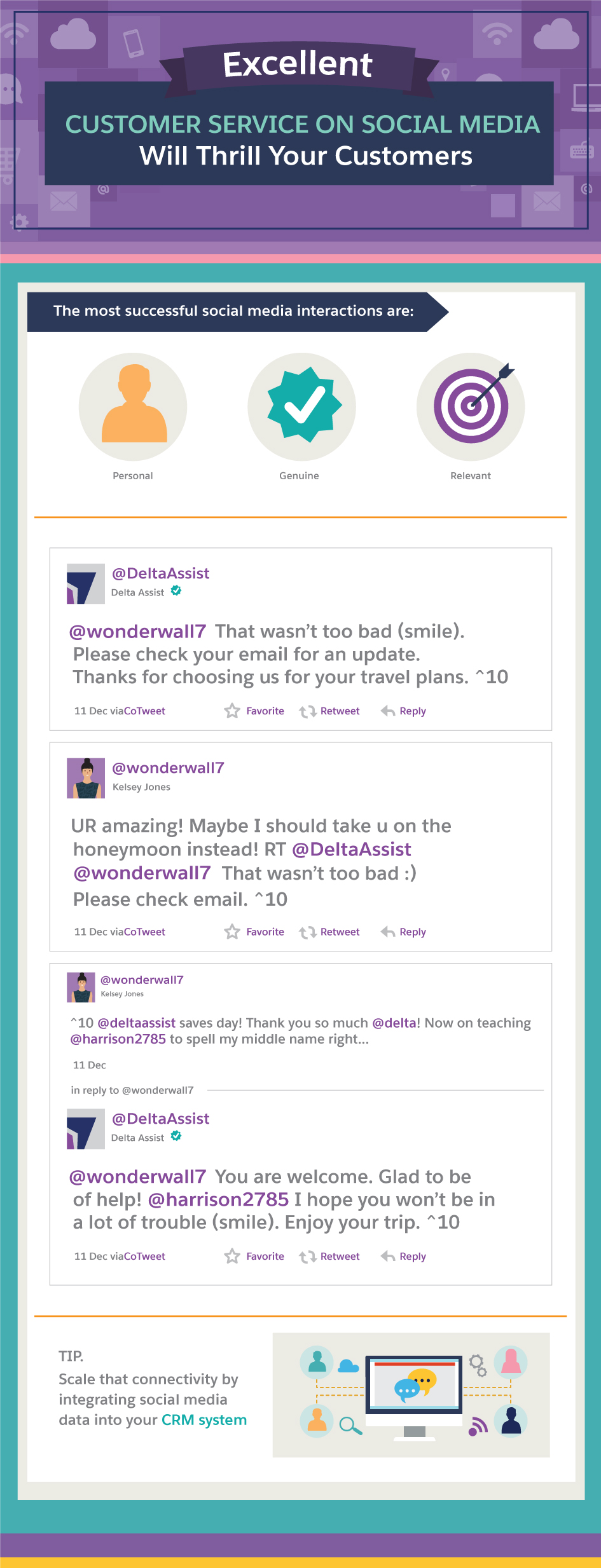
Get your FREE 30-day trial.
Start by selecting a product:
Wherever your customers want to talk to you is where you should be - including social media. Here’s how to get your social customer service running smoothly.
Even if your company isn’t ready for it yet, social media is probably used by many of your customers as a way to contact businesses about products and services. We know that you should be available to your customers on the channel they choose to contact you on, so many major companies are hiring entire teams of social media specialists who are trained on how to best respond to customer service requests through Facebook, Twitter, Instagram and other sites.
Whether you have a team of your own handling social media customer service, or you’re a lone ranger learning best practices, social media customer service comes down to three things:
Tracking as many variations as possible of your brand and product mentions
Responding to these mentions and requests for support as quickly as possible
Doing what it takes to make the customer happy

It’s common sense to track mentions of your brand and products through your username and product names. Have you ever thought to track misspellings and other mistakes? If you don’t, you may miss out on valuable customer service opportunities, or people saying great things about you.
Be sure to track the hashtag version of any Twitter and Instagram accounts you own, including top executives’ names. For example, we don’t just track @salesforceapac or @benioff, we track #Salesforce, #SFAPAC, #Salesforceapac and #MarkBenioff, among others! The Wallabies would be mad to track @qantaswallabies and ignore mentions of #wallabies or their biggest players, or the uber-popular hashtags like #AUSvNZ during games.
This isn’t just about responding to service requests – it can actually boost sales too. One Instagram user, a children’s librarian whose quirky style has earned her over 17.2K followers, used the hashtag #modcloth instead of tagging the company’s official Instagram profile, @modcloth. In one post, her followers fell in love with her green dress and asked her where they could buy it. This is a valuable opportunity for ModCloth, a popular inexpensive clothing retailer, to thank the user for her post, then direct the commenters to the page where they can buy the garment or find something similar.
Besides hashtag use, be sure to track misspellings of your brand and products as well. ModCloth also needs to track the results of ‘Modclothe’, a surprisingly common misspelling, and ‘Mod Cloth’. There are plenty of opportunities for the ModCloth team to engage with customers on Twitter, Instagram, and Facebook, and they have to be on top of the variations in how their audience addresses them. To come up with hashtags and misspellings, brainstorm options with your team in a shared space, or look at the customer service archives or Google AdWords data to see if there are any common misspellings.
We know that 24/7 customer service influences loyalty, so the best social media teams work in shifts so social media is managed round the clock, even on holidays. If your organisation isn’t big enough to manage that yet, consider setting up alerts on employee’s phones (or your phone, if you’re the sole manager) to get notifications for mentions on Facebook, Twitter and Instagram. The Facebook pages app is great for handling these, as well as for managing posts. While push notifications aren’t the most peaceful option, many entrepreneurs or social media managers find that they sleep better at night knowing their apps will ping them if there are any fires to put out.
But if this isn’t an option or you want something more scheduled, set multiple, recurring daily reminders to check your social media mentions and customer messages. Many customers won’t mind an answer within four to eight hours, depending on the request. However, this obviously isn’t true for a major airline, for example: People use social media to ask about flights or luggage. Make sure you choose the best option for your business.

Finally, if your organisation is big enough that it handles more than 50 or 100 customer service requests per day, it may be time to formalise your strategy by having a dedicated team. Most organisations wouldn’t hesitate to hire enough customer service representatives to manage the phones or email support requests, and social media shouldn’t be any different. Many large companies have dedicated Twitter accounts just for customer service help, such as @DellCares, or they have their support information right in their Twitter bio, like Virgin America.
Setting up a dedicated Twitter customer service account should also be considered and shown as an option to users. The Virgin America support page gives all the options customers can use to contact them, and Twitter is just one.
Customers like options that make getting hold of someone as easy as possible. After all, people spend just under five hours per day on their phones and 28 per cent of their time online on social media. Be available where they are – it’s crucial to your customer service efforts.
When customers reach out via social media, they are usually looking for a response that includes a resolution or a next step towards fixing their problem. If they are complaining about a product or service, and you have the power to fix it, do so. Calling a support line or emailing a different person wasn’t their preferred method of contacting your organisation, so why make them if it’s not needed?

When customers reach out through social media, do what it takes to fix issues quickly and easily – quick communication is what social media is for, and it’s probably the reason the customer chose it.
While it may take some experimentation to figure out what works best for your organisation to get customer service right through Twitter, Facebook and other platforms, it’s worth mapping out a dedicated strategy. After all, making sure your customers are satisfied is the quickest way to get more good words about what you offer published online.
Want more valuable service content? Subscribe to our blog today.